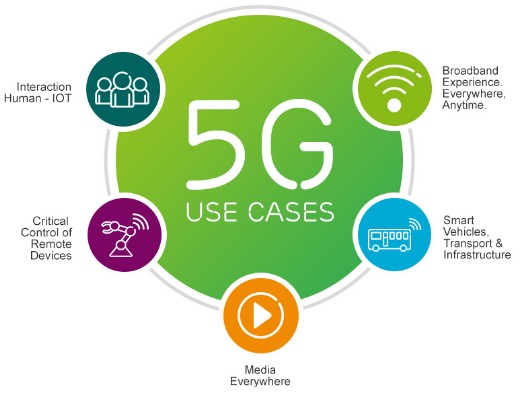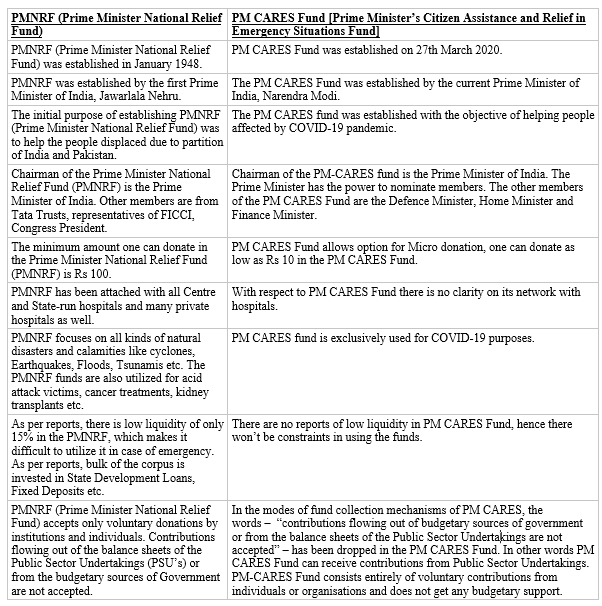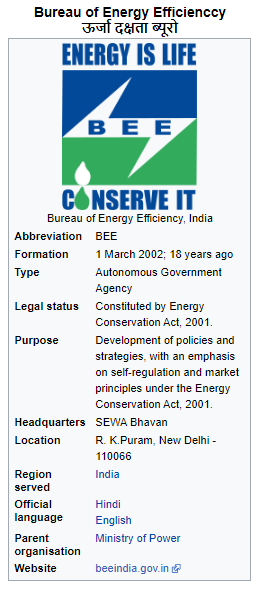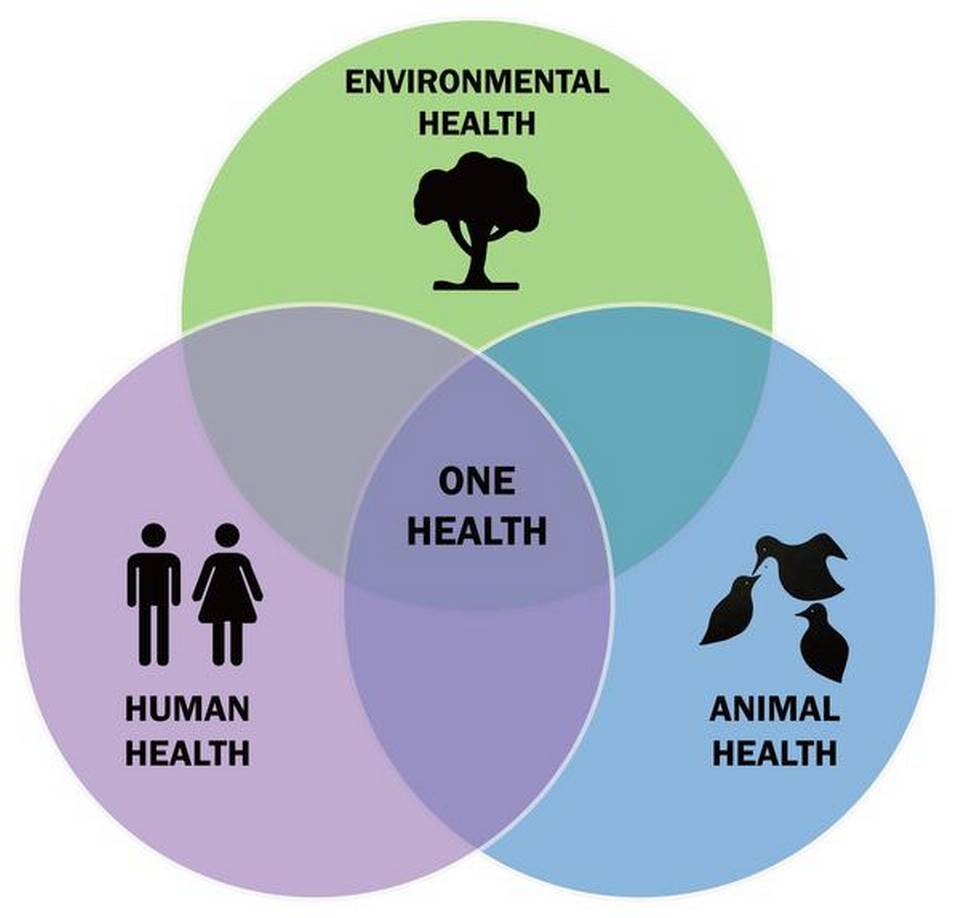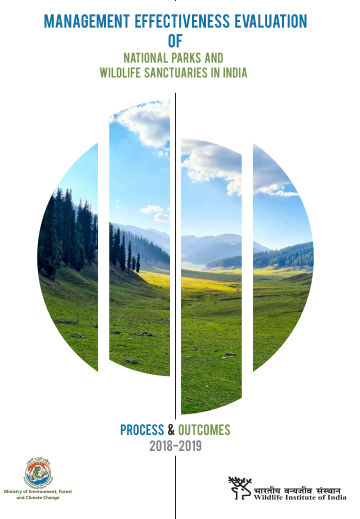The Jan 12th Current Affairs Quiz 2021
Quiz-summary
0 of 10 questions completed
Questions:
- 1
- 2
- 3
- 4
- 5
- 6
- 7
- 8
- 9
- 10
Information
The Jan 12th Current Affairs Quiz 2021
You have already completed the quiz before. Hence you can not start it again.
Quiz is loading...
You must sign in or sign up to start the quiz.
You have to finish following quiz, to start this quiz:
Results
0 of 10 questions answered correctly
Your time:
Time has elapsed
You have reached 0 of 0 points, (0)
Categories
- Not categorized 0%
- 1
- 2
- 3
- 4
- 5
- 6
- 7
- 8
- 9
- 10
- Answered
- Review
- Question 1 of 10
1. Question
Which of the following statemnets about SEA VIGIL 21 exercise are correct?
1. It is an annual pan-india coastal defense exercise
2. The exercise will involve all the States and Union Territories , including the fishing and coastal communities.CorrectAns; – d) None of the above
Explanation;-
• Both the statemnets are incorrect because it is an biennial exercise not annual that’s y 1st statement is incorrect and 2nd statement is incorrect because not all states only 13 coastal states which shares marine time border involves.
• Recently 2nd edition of Sea Vigil is conducting from Jan 12-13 2021About Sea Vigil -21
• The second edition of the biennial pan-India coastal defence exercise ‘Sea Vigil-21’ will be conducted on 12-13 January 2021.
• The exercise, inaugural edition of which was conducted in January 2019 will be undertaken along the entire 7516 km coastline and Exclusive Economic Zone of India and will involve all the 13 coastal States and Union Territories along with other maritime stakeholders, including the fishing and coastal communities.
• The exercise is being coordinated by the Indian Navy.
• The entire coastal security set up was reorganized after the 26/11 Terror attack at Mumbai which was launched via the sea route.
• The scale and conceptual expanse of the exercise is unprecedented in terms of the geographical extent, the number of stakeholders involved, the number of units participating and in terms of the objectives to be met.
• The exercise is a build up towards the major Theatre level exercise TROPEX [Theatre-level Readiness Operational Exercise] which Indian Navy conducts every two years.
• SEA VIGIL and TROPEX together will cover the entire spectrum of maritime security challenges, including transition from peace to conflict.
• Assets of the Indian Navy, Coast Guard, Customs and other maritime agencies will participate in SEA VIGIL, the conduct of which is also being facilitated by the Ministries of Defence, Home Affairs, Shipping, Petroleum and Natural Gas, Fisheries, Customs, State Governments and other agencies of Centre/ State. Incorrect
IncorrectAns; – d) None of the above
Explanation;-
• Both the statemnets are incorrect because it is an biennial exercise not annual that’s y 1st statement is incorrect and 2nd statement is incorrect because not all states only 13 coastal states which shares marine time border involves.
• Recently 2nd edition of Sea Vigil is conducting from Jan 12-13 2021About Sea Vigil -21
• The second edition of the biennial pan-India coastal defence exercise ‘Sea Vigil-21’ will be conducted on 12-13 January 2021.
• The exercise, inaugural edition of which was conducted in January 2019 will be undertaken along the entire 7516 km coastline and Exclusive Economic Zone of India and will involve all the 13 coastal States and Union Territories along with other maritime stakeholders, including the fishing and coastal communities.
• The exercise is being coordinated by the Indian Navy.
• The entire coastal security set up was reorganized after the 26/11 Terror attack at Mumbai which was launched via the sea route.
• The scale and conceptual expanse of the exercise is unprecedented in terms of the geographical extent, the number of stakeholders involved, the number of units participating and in terms of the objectives to be met.
• The exercise is a build up towards the major Theatre level exercise TROPEX [Theatre-level Readiness Operational Exercise] which Indian Navy conducts every two years.
• SEA VIGIL and TROPEX together will cover the entire spectrum of maritime security challenges, including transition from peace to conflict.
• Assets of the Indian Navy, Coast Guard, Customs and other maritime agencies will participate in SEA VIGIL, the conduct of which is also being facilitated by the Ministries of Defence, Home Affairs, Shipping, Petroleum and Natural Gas, Fisheries, Customs, State Governments and other agencies of Centre/ State.
- Question 2 of 10
2. Question
Which of the following statements about 5G Technology are correct ?
1. The 5G is more advanced compare to 4G and uses the latency time less.
2. 5G will have a narrow area in the frequency spectrum that will ensure no network congestion.
3. It also decreases energy efficiency and offers more stable network connections.CorrectAns;- a) Only 1
Explanation;-
• The 2nd and 3rd statements are incorrect because 2nd is incorrect because it is wider area of frequency not narrow and 3rd statement is incorrect because it increases the energy efficiency not decreases.
Recently Year End Review: 2020- Department of Telecommunications.
About 5G
• 5G is the fifth generation cellular technology that apart from increasing the downloading and uploading speeds over the mobile network, also reduces the latency i.e. the time taken by a network to respond.
• 5G will provide download speed of 1 Gbps, which is at least 100 times the existing data speeds.
• It also increases energy efficiency and offers more stable network connections.
• 5G will have a wider area in the frequency spectrum (range of frequencies) that will ensure no network congestion.
• In addition, it will also ensure connectivity to a full circle i.e. everything is connected to every other thing.
• The standards for the usage of 5G are defined and driven by 3rd Generation Partnership Project.
• A panel set up by the Department of Telecom to prepare a roadmap for rollout of 5G telephony in India expects the service to be operational by 2020.
• The nine-member Steering Committee, headed by AJ Paulraj, recommended releasing additional spectrum for 5G services. Incorrect
IncorrectAns;- a) Only 1
Explanation;-
• The 2nd and 3rd statements are incorrect because 2nd is incorrect because it is wider area of frequency not narrow and 3rd statement is incorrect because it increases the energy efficiency not decreases.
Recently Year End Review: 2020- Department of Telecommunications.
About 5G
• 5G is the fifth generation cellular technology that apart from increasing the downloading and uploading speeds over the mobile network, also reduces the latency i.e. the time taken by a network to respond.
• 5G will provide download speed of 1 Gbps, which is at least 100 times the existing data speeds.
• It also increases energy efficiency and offers more stable network connections.
• 5G will have a wider area in the frequency spectrum (range of frequencies) that will ensure no network congestion.
• In addition, it will also ensure connectivity to a full circle i.e. everything is connected to every other thing.
• The standards for the usage of 5G are defined and driven by 3rd Generation Partnership Project.
• A panel set up by the Department of Telecom to prepare a roadmap for rollout of 5G telephony in India expects the service to be operational by 2020.
• The nine-member Steering Committee, headed by AJ Paulraj, recommended releasing additional spectrum for 5G services.
- Question 3 of 10
3. Question
Which of the following stateemnts are incorrect about PMNRF?
1. PMNRF was established by the Prime Minister of India, Shashtri Ji.
2. The initial purpose of establishing PMNRF was to help the people displaced due to partition of India and Bangladesh.
3. PMNRF has been attached with all Centre and State-run hospitals and many private hospitals as well.CorrectAns;- a) Only 1 and 2
Explanation;-
• The 1st and 2nd statemensts are incorrect because it was established during Jawarlala Nehru Ji time and 2nd statement is incorrect because initial purpose established during partition of Pakistan and India not Bangladesh.
• Recently PM approves an ex-gratia of Rs. 2 lakh each from PMNRF for the next of kin of those who have lost their lives due to hospital fire in Maharashtra.About PMNRF
• This fund was instituted in 1948 by then Prime Minister Jawaharlal Nehru, to assist displaced persons from Pakistan.
• The fund is currently used primarily to tackle natural calamities like floods, cyclones and earthquakes.
• The fund is also used to help with medical treatment like kidney transplantation, cancer treatment and acid attack.
• The fund consists entirely of public contributions and does not get any budgetary support.
• It accepts voluntary contributions from Individuals, Organizations, Trusts, Companies and Institutions etc.
• The corpus of the fund is also invested in various forms with scheduled commercial banks and other agencies. Disbursements are made with the approval of the Prime Minister.
• The fund is recognized as a Trust under the Income Tax Act and the same is managed by the Prime Minister or multiple delegates for national causes.
• Contributions towards PMNRF are notified for 100% deduction from taxable income under section 80(G) of the Income Tax Act, 1961. Incorrect
IncorrectAns;- a) Only 1 and 2
Explanation;-
• The 1st and 2nd statemensts are incorrect because it was established during Jawarlala Nehru Ji time and 2nd statement is incorrect because initial purpose established during partition of Pakistan and India not Bangladesh.
• Recently PM approves an ex-gratia of Rs. 2 lakh each from PMNRF for the next of kin of those who have lost their lives due to hospital fire in Maharashtra.About PMNRF
• This fund was instituted in 1948 by then Prime Minister Jawaharlal Nehru, to assist displaced persons from Pakistan.
• The fund is currently used primarily to tackle natural calamities like floods, cyclones and earthquakes.
• The fund is also used to help with medical treatment like kidney transplantation, cancer treatment and acid attack.
• The fund consists entirely of public contributions and does not get any budgetary support.
• It accepts voluntary contributions from Individuals, Organizations, Trusts, Companies and Institutions etc.
• The corpus of the fund is also invested in various forms with scheduled commercial banks and other agencies. Disbursements are made with the approval of the Prime Minister.
• The fund is recognized as a Trust under the Income Tax Act and the same is managed by the Prime Minister or multiple delegates for national causes.
• Contributions towards PMNRF are notified for 100% deduction from taxable income under section 80(G) of the Income Tax Act, 1961.
- Question 4 of 10
4. Question
Which of the following statements about Bureau of Energy Efficiency (BEE) are correct?
1. The BEE is a executive body of GOI to develop programs which will increase the
conservation and efficient use of energy in India.
2. The BEE works under Minsitry of New and Renewable EnergyCorrectAns;- d) None of the above
Explanation;-
• Both the statemnets are incorrect about BE because it is a statutory body and it world under Minsitry of Power.
• Recently Power Ministry in association with BEE organizes 30th National Energy Conservation Awards
• Standard and Labelling Programme on voluntary basis for Air Compressors and Ultra High Definition (UHD) TV; and
State-wise Actions on Annual Targets and Headways on Energy Efficiency (SAATHEE) – SDA portal, also launched during eventAbout BEE
• The Bureau of Energy Efficiency is an agency of the Government of India, under the Ministry of Power
• created in March 2002 under the provisions of the nation’s 2001 Energy Conservation Act.
• The agency’s function is to develop programs which will increase the conservation and efficient use of energy in India.
• The government has proposed to make it mandatory for certain appliances in India to have ratings by the BEE starting in January 2010.
• The mission of Bureau of Energy Efficiency is to “institutionalize” energy efficiency services, enable delivery mechanisms in the country and provide leadership to energy efficiency in all sectors of the country.
• The primary objective would be to reduce energy intensity in the economy.
• The broad objectives of BEE are as under:
a) To exert leadership and provide policy recommendation and direction to national energy conservation and efficiency efforts and programs.
b) To coordinate energy efficiency and conservation policies and programs and take it to the stakeholders
c) To establish systems and procedures to measure, monitor and verify energy efficiency results in individual sectors as well as at a macro level.
d) To leverage multi-lateral and bi-lateral and private sector support in implementation of Energy Conservation Act and efficient use of energy and its conservation programs.
e) To demonstrate delivery of energy efficiency services as mandated in the EC bill through private-public partnerships.
f) To interpret, plan and manage energy conservation programs as envisaged in the Energy Conservation Act. Incorrect
IncorrectAns;- d) None of the above
Explanation;-
• Both the statemnets are incorrect about BE because it is a statutory body and it world under Minsitry of Power.
• Recently Power Ministry in association with BEE organizes 30th National Energy Conservation Awards
• Standard and Labelling Programme on voluntary basis for Air Compressors and Ultra High Definition (UHD) TV; and
State-wise Actions on Annual Targets and Headways on Energy Efficiency (SAATHEE) – SDA portal, also launched during eventAbout BEE
• The Bureau of Energy Efficiency is an agency of the Government of India, under the Ministry of Power
• created in March 2002 under the provisions of the nation’s 2001 Energy Conservation Act.
• The agency’s function is to develop programs which will increase the conservation and efficient use of energy in India.
• The government has proposed to make it mandatory for certain appliances in India to have ratings by the BEE starting in January 2010.
• The mission of Bureau of Energy Efficiency is to “institutionalize” energy efficiency services, enable delivery mechanisms in the country and provide leadership to energy efficiency in all sectors of the country.
• The primary objective would be to reduce energy intensity in the economy.
• The broad objectives of BEE are as under:
a) To exert leadership and provide policy recommendation and direction to national energy conservation and efficiency efforts and programs.
b) To coordinate energy efficiency and conservation policies and programs and take it to the stakeholders
c) To establish systems and procedures to measure, monitor and verify energy efficiency results in individual sectors as well as at a macro level.
d) To leverage multi-lateral and bi-lateral and private sector support in implementation of Energy Conservation Act and efficient use of energy and its conservation programs.
e) To demonstrate delivery of energy efficiency services as mandated in the EC bill through private-public partnerships.
f) To interpret, plan and manage energy conservation programs as envisaged in the Energy Conservation Act.
- Question 5 of 10
5. Question
Which of the following statements about Atal Tinkering Labs are correct?
1. Atal Tinkering Labs (ATL) is a sub-mission under the Atal Innovation Mission
of the Government of India.
2. This is an important government scheme administered under the NITI Aayog.CorrectAns;- c) Both 1 and 2
Explanation;-
• Recently ISRO to adopt 100 Atal Tinkering Labs across country to promote education.
About Atal Tinkering Labs
• Atal Tinkering Labs (ATL) is a sub-mission under the Atal Innovation Mission of the
• Government of India.
• This is an important government scheme administered under the NITI Aayog.
• Atal Tinkering Labs (ATL) is an activity conducted under the umbrella mission named ‘Atal Innovation Mission’ (AIM). AIM is the Indian Government’s flagship program to foster a culture of entrepreneurship and innovation.
• AIM establishes ATLs in schools across the country with a vision to ‘Cultivate one Million children in India as Neoteric Innovators’.
• The chief objective of establishing ATLs is to promote curiosity, imagination, and creativity in the minds of school-going children.
• Other goals of the scheme include inculcating in children a design mindset, adaptive learning, computational thinking, physical computing, etc.
• The philosophy behind ATLs is that prize awards and incentives are a great start to generate an aggressive wave of innovation and entrepreneurship in school-going children.
• ATL’s would be set up by schools (having grades VI to X) that are managed by the government, local bodies, private trusts or societies, etc.
• ATL’s are workspaces where children can realize their ideas through hands-on do-it-yourself mode and also acquire innovation skills.
i. They get the chance to comprehend STEM (Science, Technology, Engineering, and Math) concepts.
ii. The labs contain educational kits and equipment on electronics, science, robotics, sensors, 3D printers, computers, and open-source microcontroller boards.
iii. The labs can also have other upgraded facilities such as video conferencing and meeting rooms.
iv. There would also be other activities such as national and regional level competitions, problem-solving workshops, exhibitions, designing and fabrication of products, lectures, and so on.
v. The financial support for ATLs would be given by the AIM. Each school with an ATL will be given Rs.20 Lakh (includes a one-time Rs.10 Lakh for establishment + operational expenses of Rs.10 Lakh for a maximum of 5 years).IncorrectAns;- c) Both 1 and 2
Explanation;-
• Recently ISRO to adopt 100 Atal Tinkering Labs across country to promote education.
About Atal Tinkering Labs
• Atal Tinkering Labs (ATL) is a sub-mission under the Atal Innovation Mission of the
• Government of India.
• This is an important government scheme administered under the NITI Aayog.
• Atal Tinkering Labs (ATL) is an activity conducted under the umbrella mission named ‘Atal Innovation Mission’ (AIM). AIM is the Indian Government’s flagship program to foster a culture of entrepreneurship and innovation.
• AIM establishes ATLs in schools across the country with a vision to ‘Cultivate one Million children in India as Neoteric Innovators’.
• The chief objective of establishing ATLs is to promote curiosity, imagination, and creativity in the minds of school-going children.
• Other goals of the scheme include inculcating in children a design mindset, adaptive learning, computational thinking, physical computing, etc.
• The philosophy behind ATLs is that prize awards and incentives are a great start to generate an aggressive wave of innovation and entrepreneurship in school-going children.
• ATL’s would be set up by schools (having grades VI to X) that are managed by the government, local bodies, private trusts or societies, etc.
• ATL’s are workspaces where children can realize their ideas through hands-on do-it-yourself mode and also acquire innovation skills.
i. They get the chance to comprehend STEM (Science, Technology, Engineering, and Math) concepts.
ii. The labs contain educational kits and equipment on electronics, science, robotics, sensors, 3D printers, computers, and open-source microcontroller boards.
iii. The labs can also have other upgraded facilities such as video conferencing and meeting rooms.
iv. There would also be other activities such as national and regional level competitions, problem-solving workshops, exhibitions, designing and fabrication of products, lectures, and so on.
v. The financial support for ATLs would be given by the AIM. Each school with an ATL will be given Rs.20 Lakh (includes a one-time Rs.10 Lakh for establishment + operational expenses of Rs.10 Lakh for a maximum of 5 years). - Question 6 of 10
6. Question
Which of the following statements about World Organisation for Animal Health (OIE) are incorrect?
1. World Organisation for Animal Health (OIE) is a United Nations organisation responsible for improving animal health worldwide.
2. The main objective of the OIE is to control epizootic diseases and thus to prevent their spread.
3. It recommends killing of animals for disease control purposes.CorrectAns;- a) Only 1
Explanation;-
• As question is asked to choose incorrect the statement 1st is incorrect and 2nd and 3rd are correct.
About World Organisation for Animal Health (OIE)
• The World Organisation for Animal Health, formerly the Office International des Epizooties (OIE) is an intergovernmental organization coordinating, supporting and promoting animal disease control.
• The main objective of the OIE is to control epizootic diseases and thus to prevent their spread. Other objectives consist of: transparency, scientific information, international solidarity, sanitary safety, the promotion of Veterinary Services, food safety and animal welfare.
• It is recognized as a reference organisation by the World Trade Organization (WTO) and in 2018 had a total of 182 member states.
• The OIE does not depend on the UN system its autonomy is both institutional and financial and its activities are governed by its own constitutional texts.
• India is one of the member countries.
• OIE develops normative documents relating to rules that Member Countries can use to protect themselves from the introduction of diseases and pathogens. .
• One of them is the Terrestrial Animal Health Code.
• OIE standards are recognised by the World Trade Organization as reference international sanitary rules.
• It is headquartered in Paris, France. Incorrect
IncorrectAns;- a) Only 1
Explanation;-
• As question is asked to choose incorrect the statement 1st is incorrect and 2nd and 3rd are correct.
About World Organisation for Animal Health (OIE)
• The World Organisation for Animal Health, formerly the Office International des Epizooties (OIE) is an intergovernmental organization coordinating, supporting and promoting animal disease control.
• The main objective of the OIE is to control epizootic diseases and thus to prevent their spread. Other objectives consist of: transparency, scientific information, international solidarity, sanitary safety, the promotion of Veterinary Services, food safety and animal welfare.
• It is recognized as a reference organisation by the World Trade Organization (WTO) and in 2018 had a total of 182 member states.
• The OIE does not depend on the UN system its autonomy is both institutional and financial and its activities are governed by its own constitutional texts.
• India is one of the member countries.
• OIE develops normative documents relating to rules that Member Countries can use to protect themselves from the introduction of diseases and pathogens. .
• One of them is the Terrestrial Animal Health Code.
• OIE standards are recognised by the World Trade Organization as reference international sanitary rules.
• It is headquartered in Paris, France.
- Question 7 of 10
7. Question
Which of the following statements are correct about Environmental Relief Fund (ERF) ?
1. The ERF was established under the Environment Protection Act 1986
2. The ERF in the wake of the Bhopal Gas tragedy to ensure immediate compensation to the victims of industrial accidents.
3. Under the Act, every person who owns or has control over any hazardous substances is mandated to take out insurance and deposit its premium in the Fund, which is then used by the Collector to award immediate relief to the claimants.CorrectAns;- b) Only 2 and 3
Explanation;-
• The 1st statement is incorrect because The ERF was established under the Public Liability Insurance Act, 1991 not EPA 1986.
• Recently It was recently reported that a massive amount of over Rs 800 crore meant for environmental restoration and compensating victims of hazardous substances is lying unutilized in the Environmental Relief Fund (ERF).About Environmental Relief Fund (ERF)
• The ERF was established under the Public Liability Insurance Act, 1991 in the wake of the Bhopal Gas tragedy to ensure immediate compensation to the victims of industrial accidents.
• Under the Act, every person who owns or has control over any hazardous substances is mandated to take out insurance and deposit its premium in the Fund, which is then used by the Collector to award immediate relief to the claimants.
• Founded on the principle of no-fault liability, and in response to the Supreme Court of India’s pronouncements on absolute liability in M.C. Mehta v Union of India, 1987, the PLIA requires industries dealing with hazardous substances to subscribe compulsorily to public liability insurance.
• The Fund also draws its authority from the National Green Tribunal (NGT) Act, 2010 (and its predecessor, the National Environment Tribunal Act, 1995), under Section 24 of which the amount of damages or relief awarded by the NGT is to be remitted to the Fund.
• On 29th March 1985, following the Bhopal Gas Tragedy of December 2nd, 1984, the Processing of Claims Act 1985 was passed by the Government of India for the speedy disposal of claims arising out of or connected with the Bhopal gas leak disaster. The Act was challenged in the Supreme Court for its constitutional validity.IncorrectAns;- b) Only 2 and 3
Explanation;-
• The 1st statement is incorrect because The ERF was established under the Public Liability Insurance Act, 1991 not EPA 1986.
• Recently It was recently reported that a massive amount of over Rs 800 crore meant for environmental restoration and compensating victims of hazardous substances is lying unutilized in the Environmental Relief Fund (ERF).About Environmental Relief Fund (ERF)
• The ERF was established under the Public Liability Insurance Act, 1991 in the wake of the Bhopal Gas tragedy to ensure immediate compensation to the victims of industrial accidents.
• Under the Act, every person who owns or has control over any hazardous substances is mandated to take out insurance and deposit its premium in the Fund, which is then used by the Collector to award immediate relief to the claimants.
• Founded on the principle of no-fault liability, and in response to the Supreme Court of India’s pronouncements on absolute liability in M.C. Mehta v Union of India, 1987, the PLIA requires industries dealing with hazardous substances to subscribe compulsorily to public liability insurance.
• The Fund also draws its authority from the National Green Tribunal (NGT) Act, 2010 (and its predecessor, the National Environment Tribunal Act, 1995), under Section 24 of which the amount of damages or relief awarded by the NGT is to be remitted to the Fund.
• On 29th March 1985, following the Bhopal Gas Tragedy of December 2nd, 1984, the Processing of Claims Act 1985 was passed by the Government of India for the speedy disposal of claims arising out of or connected with the Bhopal gas leak disaster. The Act was challenged in the Supreme Court for its constitutional validity. - Question 8 of 10
8. Question
Recently seen Management Effectiveness Evaluation (MEE) is related to which of the following ?
CorrectAns;- c) Protected Area
Explanation;-
• Recently Best managed protected areas in the country to be ranked and awarded every year: Shri Prakash Javadekar
• MEE is related to Protected AreasAbout MEE
• Management Effectiveness Evaluation (MEE) of Protected Areas (PAs) has emerged as a key tool for PA managers and is increasingly being used by governments and international bodies to understand the strengths and weaknesses of the protected area management systems.
• The results of present assessment are encouraging with overall mean MEE score of 62.01% which is higher than the global mean of 56%. With this round of evaluation, the Ministry of Environment, Forest and Climate Change(MoEFCC) successfully completed one full cycle of evaluating all terrestrial National Parks and Wildlife Sanctuaries of the country from 2006 to 2019.
• MEE is a very important document that provides valuable guidance on various aspects of wildlife and protected area expand MEE of Marine Protected Areas.
• A new framework for MEE of Marine Protected Areas has been also jointly prepared by WII and MoEF&CC and it will be very useful document to implement.
• The Environment Minister also launched the Management Effectiveness Evaluation of Indian Zoos (MEE-ZOO) framework which proposes guidelines, criteria and indicators for evaluation of zoos of the country through Management Effectiveness Evaluation Process (MEE-ZOO) in a manner which is discrete, holistic and independent.
• The assessment criteria and indicators look beyond the traditional concepts, include issues of animal welfare, husbandry and sustainability of resources and finance.
• The MEE-ZOO exercise is moving towards developing highest standards in Zoos across India and adhering to core values of accountability, transparency, innovation, use of technology, collaboration and integrity to achieve the mandate of conservation of endangered species. Incorrect
IncorrectAns;- c) Protected Area
Explanation;-
• Recently Best managed protected areas in the country to be ranked and awarded every year: Shri Prakash Javadekar
• MEE is related to Protected AreasAbout MEE
• Management Effectiveness Evaluation (MEE) of Protected Areas (PAs) has emerged as a key tool for PA managers and is increasingly being used by governments and international bodies to understand the strengths and weaknesses of the protected area management systems.
• The results of present assessment are encouraging with overall mean MEE score of 62.01% which is higher than the global mean of 56%. With this round of evaluation, the Ministry of Environment, Forest and Climate Change(MoEFCC) successfully completed one full cycle of evaluating all terrestrial National Parks and Wildlife Sanctuaries of the country from 2006 to 2019.
• MEE is a very important document that provides valuable guidance on various aspects of wildlife and protected area expand MEE of Marine Protected Areas.
• A new framework for MEE of Marine Protected Areas has been also jointly prepared by WII and MoEF&CC and it will be very useful document to implement.
• The Environment Minister also launched the Management Effectiveness Evaluation of Indian Zoos (MEE-ZOO) framework which proposes guidelines, criteria and indicators for evaluation of zoos of the country through Management Effectiveness Evaluation Process (MEE-ZOO) in a manner which is discrete, holistic and independent.
• The assessment criteria and indicators look beyond the traditional concepts, include issues of animal welfare, husbandry and sustainability of resources and finance.
• The MEE-ZOO exercise is moving towards developing highest standards in Zoos across India and adhering to core values of accountability, transparency, innovation, use of technology, collaboration and integrity to achieve the mandate of conservation of endangered species.
- Question 9 of 10
9. Question
Which of the following statemnets about Honey Bee are correct?
1. The study of honey bee called Apiology
2. National Bee Board (NBB) is overall development of Beekeeping by promoting Scientific Beekeeping in India to increase the productivity of crops through pollination and increase the Honey production for increasing the income of the Beekeepers
3. The Bee are the Excellent PollinatorsCorrectAns;- d) All of the above
Explanation;-
• All the statements are correct about Honey Bee
• Recently there is study on World insect population declining at an alarming rate, say studiesHoney Bee Industry in India
• As per the Food and Agricultural Organization database, Indian ranked eighth in 2017-18 in the world in terms of honey production while China stood first. India has a potential of about 200 million bee colonies as against 3.4 million bee colonies today.
• Increasing the number of bee colonies will not only increase the production of bee-related products but will boost overall agricultural and horticultural productivity.
• As per the National Bee Board and Ministry of Agriculture & Farmers’ Welfare India’s honey exports have jumped from 29.6 to 51.5 thousand tonnes between 2014-15 and 2017-18.National Bee Board (NBB)
• Small Farmers’ Agri-Business Consortium (SFAC) registered National Bee Board as a society under the societies registration Act, 1860 in 2000.
• National Bee Board (NBB)was reconstituted (with the secretary as chairman) in June 2006.
• The main objective of the National Bee Board (NBB) is the overall development of beekeeping by promoting scientific beekeeping in India to increase the productivity of crops through pollination and increase the honey production for increasing the income of the Beekeepers/ Farmers.
• Presently NBB is implementing National horticulture mission (NHM) and Horticulture Mission for North East and Himalayan State (HMNEM).IncorrectAns;- d) All of the above
Explanation;-
• All the statements are correct about Honey Bee
• Recently there is study on World insect population declining at an alarming rate, say studiesHoney Bee Industry in India
• As per the Food and Agricultural Organization database, Indian ranked eighth in 2017-18 in the world in terms of honey production while China stood first. India has a potential of about 200 million bee colonies as against 3.4 million bee colonies today.
• Increasing the number of bee colonies will not only increase the production of bee-related products but will boost overall agricultural and horticultural productivity.
• As per the National Bee Board and Ministry of Agriculture & Farmers’ Welfare India’s honey exports have jumped from 29.6 to 51.5 thousand tonnes between 2014-15 and 2017-18.National Bee Board (NBB)
• Small Farmers’ Agri-Business Consortium (SFAC) registered National Bee Board as a society under the societies registration Act, 1860 in 2000.
• National Bee Board (NBB)was reconstituted (with the secretary as chairman) in June 2006.
• The main objective of the National Bee Board (NBB) is the overall development of beekeeping by promoting scientific beekeeping in India to increase the productivity of crops through pollination and increase the honey production for increasing the income of the Beekeepers/ Farmers.
• Presently NBB is implementing National horticulture mission (NHM) and Horticulture Mission for North East and Himalayan State (HMNEM). - Question 10 of 10
10. Question
Which of the following statemnets about aerosol are correct?
1. Aerosols are defined as a combination of liquid or solid particles suspended in a gaseous or liquid environment.
2. Natural sources of aerosols include sea salt generated from breaking waves, mineral dust blown from the surface by wind, and volcanoes.
3. Anthropogenic aerosols include sulfate, nitrate, and carbonaceous aerosols, and are mainly from fossil fuel combustion sources.CorrectAns;- d) All of the above
Explanation;-
• All the statements about aerosol are correct.
• Recently A study by the National Atmospheric Research Laboratory (NARL) in Gadanki in Chittoor district has solved the mystery over the unequal aerosol distribution in the atmosphere in India and China.About Aerosol
• Aerosols are defined as a combination of liquid or solid particles suspended in a gaseous or liquid environment.
• In the atmosphere, these particles are mainly situated in the low layers of the atmosphere (< 1.5 km) since aerosol sources are located on the terrestrial surface. • However, certain aerosols can still be found in the stratosphere, especially volcanic aerosols ejected into the high altitude layers. • The origin of atmospheric aerosols is either natural or the result of anthropogenic activities. • Natural sources of aerosols include sea salt generated from breaking waves, mineral dust blown from the surface by wind, and volcanoes. • Anthropogenic aerosols include sulfate, nitrate, and carbonaceous aerosols, and are mainly from fossil fuel combustion sources. • Effects of aerosols: a) They affect the atmospheric chemical composition. b) They can reduce visibility. c) They have important impacts on air quality and human health (e.g. aerosols can cause damage to heart and lungs). d) They serve as nuclei for cloud droplets or ice crystals in ice clouds. Incorrect
IncorrectAns;- d) All of the above
Explanation;-
• All the statements about aerosol are correct.
• Recently A study by the National Atmospheric Research Laboratory (NARL) in Gadanki in Chittoor district has solved the mystery over the unequal aerosol distribution in the atmosphere in India and China.About Aerosol
• Aerosols are defined as a combination of liquid or solid particles suspended in a gaseous or liquid environment.
• In the atmosphere, these particles are mainly situated in the low layers of the atmosphere (< 1.5 km) since aerosol sources are located on the terrestrial surface. • However, certain aerosols can still be found in the stratosphere, especially volcanic aerosols ejected into the high altitude layers. • The origin of atmospheric aerosols is either natural or the result of anthropogenic activities. • Natural sources of aerosols include sea salt generated from breaking waves, mineral dust blown from the surface by wind, and volcanoes. • Anthropogenic aerosols include sulfate, nitrate, and carbonaceous aerosols, and are mainly from fossil fuel combustion sources. • Effects of aerosols: a) They affect the atmospheric chemical composition. b) They can reduce visibility. c) They have important impacts on air quality and human health (e.g. aerosols can cause damage to heart and lungs). d) They serve as nuclei for cloud droplets or ice crystals in ice clouds.


